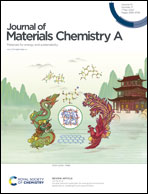On the mineralization of nanocellulose to produce functional hybrid materials†
Abstract
Nanocellulose (NC)-based materials constitute a new class of bio-based building blocks that are inspiring advances for the next generation of high-performance sustainable materials. However, NC exhibits important drawbacks which limit its applications, such as its inherent interaction with bacteria and proteins, low conductivity, poor thermal stability, high water absorption (leading to, among other things, loss of structural integrity), etc. An efficient strategy to improve this, besides the possibility of introducing further properties, is through mineralization by in situ growing inorganic subcomponents to form NC-based hybrids. Following the example of nature which has been mineralizing biopolymers from the beginning of life to create complex structures (forming protective shields or structural supports), mineralization can be adopted in different (2D/3D) configurations, for instance, membranes, scaffolds, sponges, and monoliths (as per requirements), by in situ growing multiple subcomponents such as metal oxides, silicates, and metal–organic frameworks. The components act synergistically complementing each other, thus providing new functionalities that the components individually do not possess. For instance, it is possible to introduce properties such as self-healing behavior, magnetic character, antimicrobial properties, electrical and thermal conductivity, etc., which opens a wide range of opportunities in a variety of fields (e.g., energy, printed electronics, biomedicine, water/gas purification, etc.) of current interest and requirements. The present review paper summarizes and discusses the advanced applications of thus-formed nanocellulose hybrids, along with a general overview of the synthesis protocol and advanced characterization tools used to analyze these complex materials.

- This article is part of the themed collection: Journal of Materials Chemistry A Recent Review Articles


 Please wait while we load your content...
Please wait while we load your content...